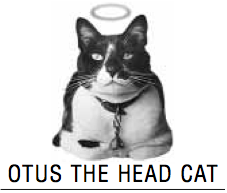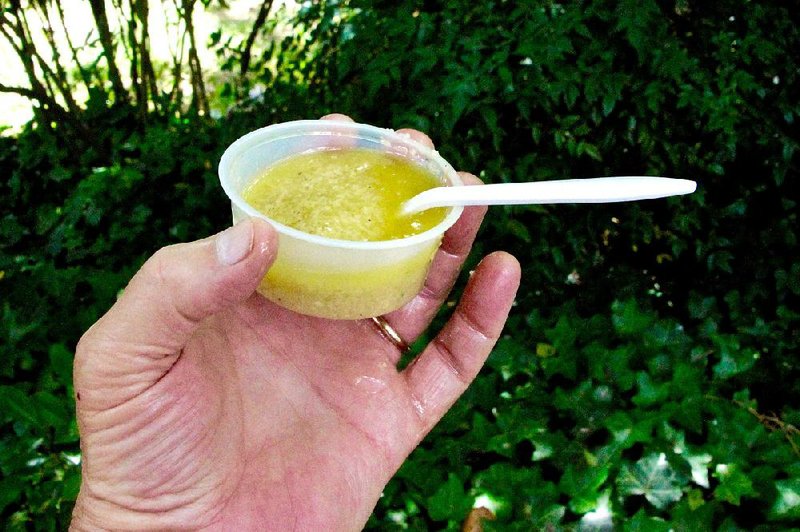Dear Otus,
Hey, good buddy, you really let us down. You know we depend on you to give us advance warning of when the humidity pods are arriving, but the first I heard of them this year was May 25 when Todd Yakoubian forecast the coming "Arkan-Sauna." I'd like a bit more notice than that. I'm still in shock.
-- Anna Falactic,
Sherwood
Dear Anna,
It was wholly a pleasure to hear from you, although never a pleasure to be dressed down without due cause. It's especially egregious if you invoke Yakoubian, who nearly pops a vein with pent-up anticipation each summer until the moment he can proclaim an "Arkan-Sauna " -- the neologism he popularized during our brutal 2011 heat wave.
On Aug. 3, 2011, Little Rock hit 114 degrees at 2:40 p.m. The heat index was a soul-sapping 117.
Most became aware of the term on June 27, 2011, when Todd mentioned in his award-winning KATV Weather Blog: "Arkan-Sauna! EVERYBODY has triple digit heat index readings right now. From 101 to 115 degrees!"
And on May 19 this year, Todd tweeted, "ARKAN-SAUNA! Heat index already to 100 degrees in Jonesboro and 91 in Little Rock. Stay hydrated! #ARWX."
Longtime readers know that with his infectious elan and native Little Rockian knowledge, Todd is our favorite meteorologist. And I love a nifty neologism as much as the next guy. But in his zeal to unleash the term each summer, Todd has come to rely on his computer models too much.
That's what happened at the end of last month when Todd cited both the Global Forecast System (GFS) and European Centre for Medium-Range Weather Forecasts (ECMWF or Euro) models in order to blog, "Arkan-Sauna 2018. If the computer models are correct, we'll challenge daily record highs later next week."
As any savvy veteran worth his American Meteorological Society certification, Todd also gave himself an out: "This is a long-range forecast and subject to change, but most of the data I have looked at supports this early summer heat wave."
Well, this being Arkansas, it didn't happen.
After flirting with some warmer weather at the end of May and in early June, we settled back to more seasonable temperatures.
The term Arkan-Sauna is still in the protologism stage. Humidity pods, on the other hand, is a term I coined in 1984 and it long ago entered the pop culture vernacular across the land.
Prior to its use in this column, the National Weather Service labeled the annual humidity pod phenomenon as the rather unwieldy "recidivistic rehumidification."
It's still early. Granted, rogue or scout pods can arrive as early as Memorial Day and are most impressive in their singularity. By the time the swarm arrives each summer, pod individuality is lost amid the massive onslaught and overwhelming immensity of the event.
About the annual swarm, Brandon Farquar of the weather service in North Little Rock notes, "We can predict their severity on the Fujita Pod Scale and any associated and accompanying mesoscale convective systems."
In layman's terms, the Fujita Pod Scale, or FPS, goes from FPS0 (weak) to FPS5 (massive). Farquar says this year's humidity pod event will most likely be FPS3 (moderate) thanks to subtropical storm Alberto, the first tropical or subtropical cyclone to enter the Gulf of Mexico in the month of May since 1976.
Alberto sapped all the moisture that was concentrating around the Yucatan Channel and in the Gulf of Tampico. Humidity pods are composed of a highly viscous, gelatinous-like substance that congeals in late spring. They replicate through parthenogenesis and a form of asexual gelatinous mitosis.
Bottom line: The pods will be later this season thanks to Alberto.
Forget computer models, when the pods do arrive, they'll first be spotted by the eagle eyes of the Arkansas Association of Humidity Pod Chasers and Spotters (AAHPCS), founded in 1987 and headquartered in Hot Springs Village.
As the pods ooze overhead, longtime pod master Lou Gubrious of the Village retrieves one of the cups of frozen humidity pod he harvested in 1997 from an RV-size rogue that crashed in his backyard and takes it outside to measure how long the sample takes to melt, evaporate and join the passing pods (see photo). That gives Lou an accurate estimate on where the season will rank on the FPS scale.
Until next time, Kalaka suggests you keep a frequent watch on Todd's Weather Blog and an eye to the sky. And don't forget that you will know it when the pods arrive. There will be no doubt.
Disclaimer
Fayetteville-born Otus the Head Cat's award-winning column of humorous fabrication
appears every Saturday. Email:
mstorey@arkansasonline.com

Disclaimer: Fayetteville-born Otus the Head Cat's award-winning column of 👉 humorous fabrication 👈 appears every Saturday.
HomeStyle on 06/09/2018
